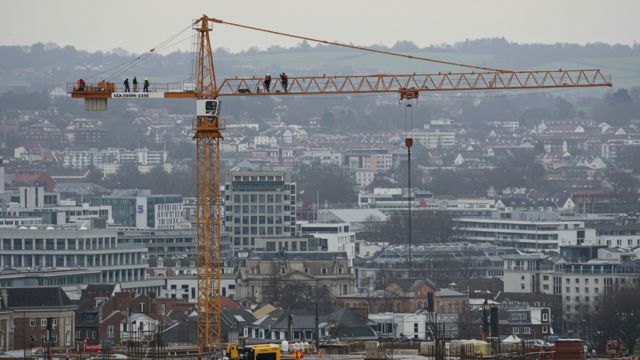In the ever-evolving landscape of urban construction, technology has become a game-changer, especially when it comes to city crane hire services. Cranes are vital machines that help build the skylines of our cities, and integrating advanced technology into their operation is making these services safer, more efficient, and increasingly responsive to the challenges of working in busy urban environments. From smarter scheduling to enhanced safety features, technology is transforming how crane hire companies deliver their services.
Enhancing Safety Through Smart Technology
Safety has always been the cornerstone of crane operations, but technology is now taking it to a whole new level. Modern cranes are often equipped with sensors that monitor everything from load weight and wind speed to structural integrity in real time. These sensors send data directly to operators and control centers, alerting them instantly if conditions become unsafe.
For instance, if a crane starts to approach its maximum load capacity or if the wind picks up dangerously, operators receive immediate warnings that allow them to take action before accidents happen. This real-time monitoring reduces human error and helps prevent costly and potentially life-threatening incidents on busy city sites.
Moreover, some companies are integrating AI-powered cameras and software that monitor the crane’s surroundings to detect obstacles or unauthorized personnel in hazardous zones. This added layer of awareness supports operators in crowded urban settings where tight spaces and constant activity make vigilance essential.
Streamlining Project Management with Digital Tools
Managing crane hire services in a bustling city involves coordinating deliveries, permits, operators, and multiple other details. Technology is revolutionizing this process by bringing everything into digital platforms that simplify communication and planning.
Cloud-based scheduling software helps crane hire companies optimize booking times and allocate resources more effectively. These systems can automatically factor in traffic conditions, site access limitations, and equipment availability to ensure cranes arrive exactly when needed—reducing downtime and avoiding costly delays.
Project managers benefit from having a centralized platform where they can track crane locations, monitor usage hours, and receive updates on maintenance status. This transparency improves decision-making and allows for quicker adjustments when unexpected challenges arise.
In addition, mobile apps enable operators and site managers to communicate instantly, share documents, or report issues, keeping everyone connected even across different locations. This digital connectivity fosters smoother collaboration and enhances overall efficiency.
Reducing Environmental Impact with Technology
Cities are under increasing pressure to reduce pollution and carbon emissions, and crane hire companies are embracing technology to support green construction efforts. Hybrid and electric cranes, which rely on cleaner energy sources, are becoming more prevalent thanks to advances in battery technology and energy management systems.
Beyond the hardware, technology helps optimize crane operation to minimize fuel consumption. Smart controls can adjust engine output based on the load and environmental conditions, ensuring that cranes use only the energy they need.
Additionally, software that tracks and analyzes fuel usage and emissions data provides companies with insights into their environmental impact. With this information, they can implement strategies to reduce waste, improve sustainability, and comply with stricter urban regulations.
Improving Operator Training and Skill Development
Technology is also enhancing the training and ongoing education of crane operators, which is crucial for maintaining high safety and efficiency standards. Virtual reality (VR) and augmented reality (AR) simulators offer immersive training experiences that replicate real-world crane operations without the risks.
Operators can practice handling different loads, working in confined urban sites, or responding to emergency scenarios in a safe, controlled environment. This hands-on experience improves their skills and confidence before they step onto an actual construction site.
Furthermore, remote monitoring systems allow experienced supervisors to provide real-time feedback to operators, even if they are not physically present. This continuous learning approach helps reduce errors and encourages best practices.
Facilitating Maintenance with Predictive Technology
Regular maintenance is vital to keep cranes in top condition, but it can be challenging to predict when a machine might fail. Modern crane hire companies are adopting predictive maintenance technologies that use sensors and data analytics to anticipate issues before they become serious.
By analyzing vibration patterns, temperature changes, or hydraulic system performance, these systems detect early warning signs of wear or malfunction. This allows companies to schedule maintenance proactively, preventing unexpected breakdowns that could halt a project.
The benefits are clear: fewer disruptions, extended equipment lifespan, and lower repair costs. For city projects where timing is critical, this technological approach to maintenance ensures cranes remain reliable throughout the job.
Navigating Complex Urban Environments with GPS and Drones
Urban construction sites are notoriously complex, with limited space and strict regulations. Technology helps crane hire services navigate these challenges more effectively.
GPS tracking systems provide real-time location data for cranes, helping operators and project managers monitor movements and plan lifts with precision. This technology also supports compliance with city traffic rules by optimizing transport routes and minimizing disruptions.
Drones are another exciting innovation making a difference. They can perform aerial surveys to assess site conditions before cranes arrive, providing detailed topographic maps and identifying potential obstacles. During operations, drones can monitor crane performance and the surrounding area from vantage points that operators cannot easily access.
This bird’s-eye view improves safety, enhances planning accuracy, and helps teams respond quickly if any issues arise.
Building Stronger Client Relationships Through Transparency
Clients today expect more than just equipment rental—they want partners who offer clear communication and reliable service. Technology enables crane hire companies to meet these expectations by providing real-time updates and transparent reporting.
Through online portals or mobile apps, clients can track project progress, view equipment status, and access documentation such as permits or safety certifications. This level of transparency builds trust and makes it easier to manage expectations.
When clients feel informed and supported, they are more likely to develop long-term relationships with their crane hire providers, leading to smoother future projects.
Technology is reshaping city crane hire services in ways that benefit everyone involved—from operators and project managers to local communities. Safer machines, smarter management, greener operations, and improved communication are just a few of the positive changes happening today. As urban construction continues to grow more complex, embracing these technological advancements will be essential to meeting the demands of modern cities while building a safer, more sustainable future.



